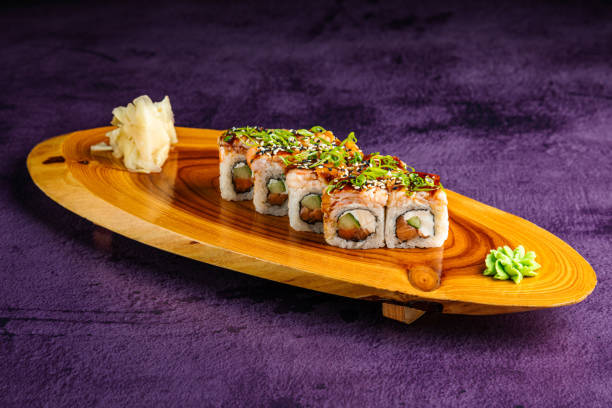Naked Sushi: A Fusion of Art and Cuisine

Naked sushi, also known as “nyotaimori” in Japanese, is a unique and controversial dining experience that merges the culinary art of sushi-making with the human form. This practice involves serving sushi on the nude body of a model, creating a visually stunning and multisensory experience that has fascinated and divided opinions across the globe.
Historical Roots of Naked Sushi
The origins of naked sushi can be traced back to the samurai era in feudal Japan. It was during these times that victorious samurai warriors would celebrate with elaborate feasts, where sushi was served on the bodies of geishas. Known as “nyotaimori,” which translates to “female body presentation,” this tradition was a symbol of luxury, victory, and the meticulous artistry of sushi preparation.
The Artistry Behind Naked Sushi
Central to the practice of naked sushi is the intricate art of sushi-making. Master chefs spend years honing their skills, selecting the freshest ingredients, and crafting sushi that delights both the palate and the eyes. The presentation on a human body adds an element of visual artistry, transforming the meal into a sensory feast.
The model’s body serves as a living canvas, with each piece of sushi meticulously arranged to complement the body’s natural contours. This arrangement is not only about aesthetics but also about creating a respectful and harmonious dining experience. The delicate balance between culinary craftsmanship and visual presentation is what sets naked sushi apart from traditional dining experiences.
Ethical Considerations and Modern Adaptations
While naked sushi continues to be celebrated for its artistic and cultural significance, it has also faced significant criticism in the modern era. Critics argue that the practice objectifies women and raises ethical concerns about consent and exploitation. These debates have led to increased scrutiny and the implementation of stricter regulations to ensure ethical standards are upheld.
Modern interpretations of naked sushi often emphasize inclusivity and diversity, featuring models of various body types and backgrounds. This approach challenges traditional norms and promotes body positivity, reflecting broader cultural shifts towards respect and inclusivity. Ensuring that all participants are comfortable and valued is central to these contemporary adaptations.
Conclusion
Naked sushi stands at the intersection of cultural heritage and modern gastronomy. While it navigates the complexities of ethical considerations, it continues to captivate and inspire with its blend of tradition, artistry, and sensory delight. Whether viewed through the lens of controversy or celebration, naked sushi offers a profound and thought-provoking glimpse into the rich tapestry of Japanese culinary traditions.







